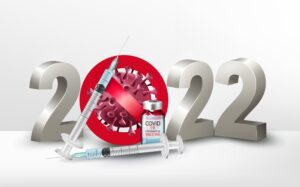Comments from J&J have led to questions surrounding the long-term revenues from COVID-19 vaccines. However, the sector is just one area driving bioprocess growth, both Danaher and Sartorius say.
While the COVID-19 virus is still virulent in some areas, the rapid development, scale-up, and delivery of vaccines over the past two years has helped bring the world back to some sense of normality.
The unprecedented roll-out has resulted in hundreds-of-billions of dollars ending up in the pockets of several vaccine developers, and a windfall of revenue for the service firms that support them, especially the bioprocess vendors providing manufacturing equipment and consumables. However, as the pandemic subsides and the market for COVID vaccines diminishes, there is a concern that the good times are over for this corner of the industry, which has been so dominant in decision making of late.

Image: stockphotosecrets
Johnson & Johnson (J&J), with its so-called ‘Janssen’ vaccine, became the third company to win FDA Emergency Use Authorization (EUA) in February 2021. But last week the firm lowered its 2022 guidance by $1 billion and said it would no longer be providing COVID-19 vaccine revenue guidance. While the firm did not explicitly say this was due to diminished demand (CFO Joe Wolk said it was unusual to provide guidance for a specific product to begin with), J&J has been assessing its COVID-19 production needs over the past few months.
Vendor response
Bioprocess vendors Sartorius and Danaher Corporation presented their respective Q1 financials last week, and were unsurprisingly asked how a vaccine slowdown would affect their own revenue guidances.
Sartorius said it made roughly €500 million ($537 million) from COVID vaccine-related business in 2021, and in January said it expected similar this year. “So far, our customers — particularly those who are really representing the majority of this business — are sticking to their forecasts,” CEO Joachim Kreuzburg told stakeholders last week.
“Maybe one can say that J&J didn’t represent a very large part of the vaccines that have been used last year and this year, so that this shouldn’t change the overall market expectation of any player, I would say, except for J&J maybe.”
He continued, adding the whole COVID vaccine space remains “a dynamic area, a volatile area where one could work with a couple of different assumptions, but we base our assumption on what our customers have told us and are telling us, and that’s why we, at this point in time, stick to our expectation of €500 million for the full year, approximately.”
Danaher — the parent company of Pall and Cytiva — has previously said it expects to earn around $2 billion in 2022 supporting various COVID vaccine programs. CEO Rainer Blair did not give an update to its forecast, but told investors COVID is just one variable among many opportunities affecting the biopharma services space.
“COVID is going to do what it does, but there is a larger market that is growing rapidly and we are going to continue to see fluctuation as it relates to COVID volumes, whether there is a decision on booster for different age groups, whether it becomes part of an annualized immunization regimen. All of these are open questions and our belief is that COVID is a part of our business, but there is another part of this business, which is larger, it is growing at a faster rate and we are making investments to ensure that we capture the appropriate shares here.”
Specifically, he said the project pipeline for monoclonal antibodies is 50% larger today than it was five years ago, while for cell and gene therapy it is ten times as much, driving extraordinary activity in the clinical trial area. “You see customers really starting to focus on these new projects across all modalities and not just allocating the resources to COVID, but to these new modalities. So that’s really important to note that customer activity level continues to be very, very high, and that plays through in the clinical trials.”
For 2022, he continued to forecast bioprocessing at both Cytiva and Pall to see high-single digit, low-double digit growth.
